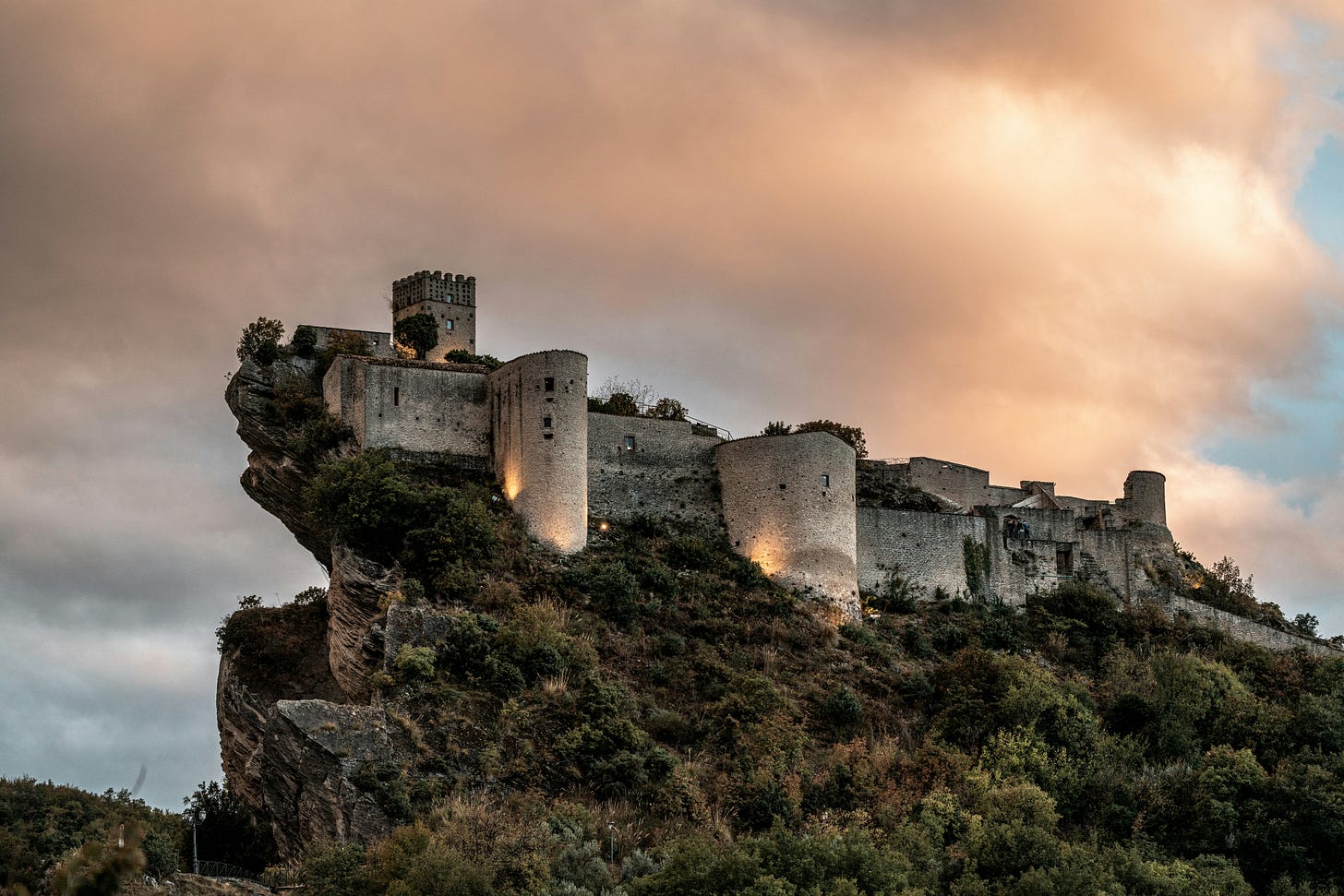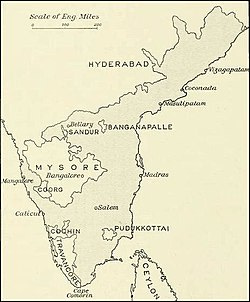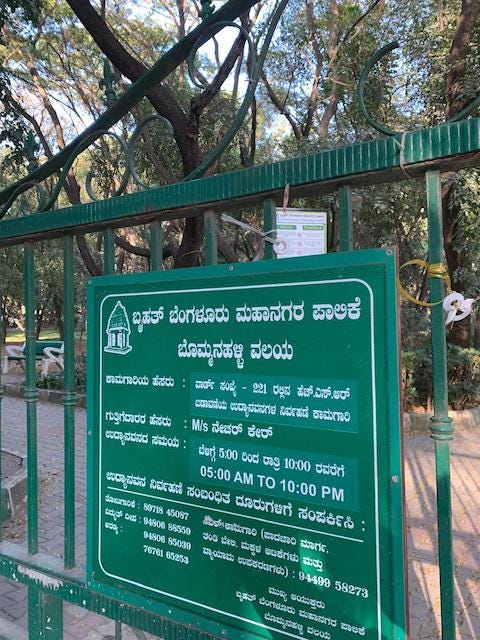
Hello!
I spent most of December and January in cities formed in the 16th and 17th centuries - Madras (1639) and Hyderabad (1591) - and found that old cities always have a history lesson or two tucked away in their ancient lanes, waiting to be discovered by any aimlessly wandering history buff.
Madras, of course, was the capital city of the famed Madras Presidency (state) under the British Empire which encompassed most of South India. (Hyderabad State was also another large princely state with a long history. )
So imagine my surprise, finding myself delayed in Madras for a few extra days around Christmas, discovering historical nuggets as I explored the city.
Fort St. George, whose land was acquired in 1639 by English traders in exchange for providing protection to local rulers from Dutch and Portuguese armies, was completed in 1644 to coincide with St. George’s Day.
It was one of the first forts constructed by the English in India and became a critical foothold for the British East India Company, from which they later expanded their influence. This fort eventually developed into a thriving British settlement, laying the foundation for the present-day city of Madras (now Chennai).
Its original barrack buildings, evening assembly halls, cannons, streets still displaying ‘York Street’ nameboards, and tall marble statues of viceroys stand proud as testaments to time.
The main fort barracks have been converted into a museum—housing, among other items, a fascinating collection of 17th-century coins, arms, and armor—while parts of the fort now serve as state government offices.
This shared space allows visitors, citizens, and officials to co-mingle, immersing themselves in both the history and the ongoing administrative functions of the state.
In its own way, I suppose this reuse may be an efficient solution to protect and maintain the status of historical buildings, while also offering a way to finance their preservation.
Still, I would have much preferred to explore the enticing yet cordoned-off independent offices (from which I was promptly turned away!)—spaces that once served as the period residences of famous historical figures.
Nestled within the grounds of Fort St. George, I also found a beautiful and historic Anglican church, St. Mary’s Church, the oldest Anglican church in India. Built between 1678 and 1680, it remains an active place of worship today.
Its records show that it solemnized the marriages of historical personalities like Robert Clive—an officer of the East India Company who played a key role in establishing British rule in India—and Governor Elihu Yale, a British official and benefactor after whom Yale University is named.
Its memorials—honoring those lost to battle and disease in a foreign land, as well as commemorating weddings and births—serve as visual reminders of the intertwined history of two nations and cultures, a bond preserved forever through time.
Among the many, I discovered the grave of Thomas Munro, the Governor-General of Madras, who is believed to have met an Indian saint (after the saint entered Samadhi a few hundred years earlier)—a story I covered under the Mysteries of Faith series.
I chanced upon Santhome Basilica, first known to have existed between 883 and 1292 AD, repaired by the Portuguese in 1523, and finally rebuilt in 1896 by the British.
I learned it is one of only three churches in the world, each believed to house the tomb of one of the twelve apostles of Jesus. This one holds the tomb of St. Thomas; the others are St. Peter’s Basilica in Vatican City, which houses the tomb of St. Peter, and the Santiago de Compostela Cathedral in Spain, believed to hold the remains of St. James.
I also made a delightful discovery: the home of Indian-American philosopher J. K. Krishnamurti (1895 - 1986)—when he visited India—is now a dedicated global center, complete with a library and bookstore, freely open to seekers on a journey of greater understanding.
The white stuccoed period residence, with its tall windows and wide verandas in a Roman-British style, is set amidst expansive grounds and offers hours or even days (with its on-site rooms) to luxuriate in the joy of walking, reading, and quiet reflection. The golden ask: think for yourself—uninfluenced by any social media personality.
What a rare gift!
I wonder if writing a premium photo-essay of my wanderings would be of interest!
Meanwhile, here are the stories I did write in January, in case you missed any of 'em: Wisdom of the Animal Stories, So What is the Deal with Indian English, Wisdom Through Proverbs, Culture, Bollywood Style and my December musing under When the Door to God’s Home is Open.
Returning to Bangalore, I found more traffic, increased construction of new offices and residences, and continued erosion of major and minor roads, making travel anywhere a hardship compared to the other two cities.
For some, like a biker I chanced upon, traffic also means it’s time to watch a bit of cricket.
Progress is commendable, but when it comes at the cost of quality of life—a consideration that those racing to develop every piece of land they can find are ignoring—it can be wearisome.
On a brighter note, my post on the futility of park closures during the day1 seems to have magically made its way to the powers-that-be—or at least, that’s what I am hoping!
A year after their public announcement, I found a local park sporting a new sign with new hours—open 5 am to 10 pm: change, the incremental and Indian way!
On that note, I bid you adieu—until next month!
Jayshree
p.s. Read my other monthly musings here.
Parks in Bangalore were—and in other cities still are—annoyingly open only between 5-9 am and 4-7 pm.






I can't help look at older buildings here in the my “younger” United States, especially California in the west where I live without wondering how pioneers who drove horse and buggies on raw land without proper roads, managed to build amazing architectural structures without the aid of power tools. It’s just where my mind goes, and then I have to explore the idea humanity is regressing in intelligence rather progressing as I extend my thoughts worldwide. Thank you Jayshree ✨💜🤗 I love this!
Glad to hear, Jayshree, that you enjoyed my hometown, Chennai (formerly Madras.) I have lived there for all but 6 of my 73 years and would not dream of living anywhere else. I returned this evening from a 6-day visit to your hometown, Bengaluru (formerly Bangalore) and I am reeling by the "development" gone wild. In my growing years, I used to spend summers at my grandparents home in the city: slow paced, charming, cool town that is now gone in the madness of growth. The roads are unusable in large part: from the monstrous amount of traffic that persists till late at night and the state of disrepair. Everywhere you go, you are confronted by construction attributed to the Metro. Still, the city has its charms - particularly the tree-lined avenues and roads and the two major parks: Lalbagh and Cubbon Park.